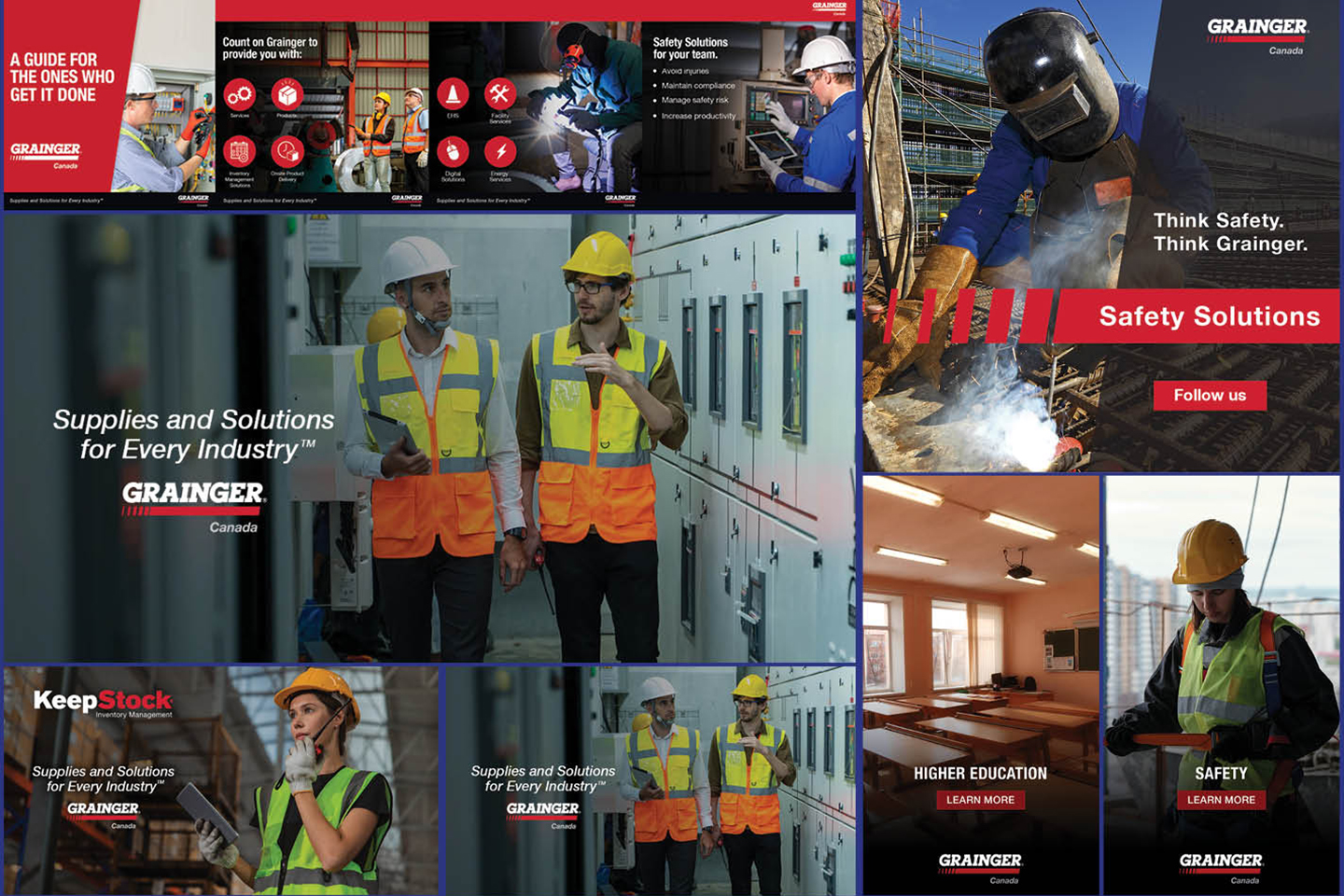Standardized Communication
for Grainger Canada
Objectives
Grainger Canada, a market leader in MRO supplies and solutions, was facing inefficiencies in content creation across its digital marketing channels. With teams producing content for social media, emails, and marketing collateral independently, the results were disjointed, time-consuming, and lacked a unified brand voice. Their growing need for speed, scalability, and brand cohesion highlighted a critical gap in their content operations.
The objective was to introduce a scalable templatization system that would streamline content production, ensure a consistent brand identity across all channels, improve content quality, and optimize team workflows. This transformation aimed not just at visual consistency, but at enabling Grainger Canada to communicate with more agility, professionalism, and impact.
Solution
Our approach focused on building a modular and scalable template system tailored to Grainger Canada’s diverse content needs. We began by auditing their current content workflows, analyzing design inconsistencies, and identifying the most frequently used content types across marketing and sales functions.
From there, we developed a cohesive library of branded templates for social media posts, emails, and marketing assets. These templates were thoughtfully designed to align with Grainger Canada’s brand guidelines, with clear rules on typography, color, layout, voice, and tone. Flexibility was key; while maintaining brand consistency, the templates allowed space for teams to customize messages based on campaign needs.
Each template was optimized for speed and reuse. Email frameworks were coded for responsiveness and accessibility, while social media kits were adapted for platform-specific dimensions and audience behavior. We also set up a centralized asset management system, giving content creators quick access to approved visuals, icons, and templates, cutting production time drastically.

Results
The templatization initiative reshaped Grainger Canada’s marketing engine — transforming how content was produced, managed, and perceived. By shifting to a structured system, the organization achieved both creative consistency and operational efficiency, ultimately strengthening its digital presence in the B2B landscape.
*
50% Reduction in Content Production Time
Standardized layouts allowed marketing teams to focus on strategy and storytelling instead of repetitive design work.
*
Improved Brand Cohesion Across Channels
Every touchpoint — from LinkedIn posts to promotional emails — now followed a unified visual language, boosting recognition and trust.
*
Centralized Asset Repository
A shared library of pre-approved templates and brand assets eliminated duplication and ensured teams always used the latest materials.
*
Enhanced Content Quality
Structured formats and CTA-driven designs led to more purposeful communication and improved engagement metrics across digital channels.
*
Scalable for Future Growth
The system was built to grow with the brand, accommodating new formats, campaigns, and teams without sacrificing quality or speed.

